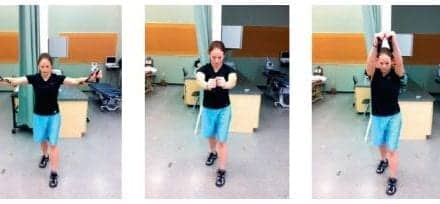Representatives from the National Institute of Standards and Technology (NIST) interviewed persons with mobility impairments to record their views regarding evacuation strategies from multistory buildings during an emergency.
The study included views from 51 persons with mobility impairments from five major metropolitan areas. The views were recorded via face-to-face interviews with the participants, who work in multistory buildings and, for the most part, use wheelchairs while on the job, per a media release from NIST.
“We wanted to get recognition for a population with egress needs that often go unheard when evacuation procedures are designed, implemented, and practiced,” says Kathryn Butler, lead author of the NIST Technical Note 1923, Perspectives of Occupants with Mobility Impairments on Fire Evacuation and Elevators.
Among the questions Butler and colleagues asked were: “How would you describe your everyday mobility at work?” “What experiences have you had during fire drills or fire emergencies at work?” and “What do you currently think about using elevators as a means to leave a building during a fire evacuation?”
The third question included information about an occupant evacuation elevator, that may have potential for getting persons with mobility impairments out of a building safely and quickly, without the assistance of others, and without having to leave their mobility devices behind, per the release.
“The effectiveness of this group using elevators for emergency exit, rather than the traditional ‘take the stairs’ approach, was dramatically shown in the findings from our [NIST’s] investigation of the collapses of the World Trade Center [WTC] towers on 9/11,” says study co-author Erica Kuligowski, in the release.
“During the time between the two plane impacts, many occupants of WTC 2 [the second tower struck]—including some with mobility impairments—self-evacuated using the elevators and probably saved their lives,” she adds.
Based on the interviewees’ responses to the questions, the researchers noted a number of issues regarding evacuation procedures.
For example, the release explains, some respondents stated that they had received proper training, had clear instructions to follow, and were confident that they would be assisted to safety. In contrast, other said they had received little or no training, were provided with conflicting or insufficient information to make decisions, and felt the need to make their own plans for getting out of the building—including negotiating stairs by walking slowly with crutches or assistance, crawling, sliding, or seated in a manual wheelchair.
The authors note in the release that they prepared the report to help guide building designers, facility managers, safety officers, emergency personnel, and others tasked with developing emergency evacuation procedures. The guidance is especially relevant, they continue, because it contains real concerns, insights, and opinions from the participants who are mobility impaired.
“For too long, building evacuation plans have been put in place with measures that designers believe people with mobility impairments will need,” Kuligowski concludes. “Our study shows that you can’t do it properly without listening to what they actually do require.”
[Source(s): National Institute of Standards and Technology, Science Daily]
[Photo courtesy of J. Stoughton/NIST]





